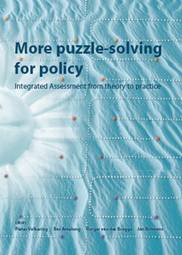Problem formulation and classification in integrated assessment modelling
Abstract
In this paper we address the steps that precede the creation of a mathematical representation of real world phenomena. More specifically, we investigate first the formulation of the problem statement in an integrated assessment modelling study, seeking here to offer a more precise definition of problem formulation and examining its influence on later stages of modelling. We identify, through both numerous group discussions at the summer school and a survey of the Integrated Assessment literature, that although there is much discourse around the problem’s formulation, it has not been well defined. Subsequently, a more precise definition may aid in helping us to understand the steps researchers might take in formulating and solving a problem. Furthermore, problem formulation will be improved through additional classification and detailed analysis particularly with respect to stakeholder involvement and participatory approaches. These steps may be of value to not only emerging researchers and professionals such as has attended this current and future Summer Schools, but also giving credence to the observed lack of attention to problem formulation in the literature.
Download full text in pdf format
 Published as:
Published as:
K. Kok,
P. Valkering,
J. Carmichael,
J. Hinkel,
I. N. Athanasiadis,
O. Salmi,
V. Moreau,
P. Steenhof,
Problem formulation and classification in integrated assessment modelling,
More Puzzle Solving for Policy, pg. 208-217,
2006, University of Maastricht.
You might also enjoy (View all publications)
- CY-Bench: A comprehensive benchmark dataset for sub-national crop yield forecasting
- Hybrid phenology modeling for predicting temperature effects on tree dormancy
- To measure or not: A cost-sensitive, selective measuring environment for agricultural management decisions with reinforcement learning
